I know we haven’t had much precipitation this year, but when we do, do you know when to stay off of the natural surface trails? I know some mountain bikers may be aware that others ride in wet conditions in different areas of the country, and think that it’s OK to do so here. I’ve seen the evidence in Wilderness Park and on other trails. With the type of soil we have here, generally clay and organic matter, you can make a mess of it pretty fast. According to the San Diego Mountain Biking Association, riding when wet causes 20 times more damage than riding when dry. In areas of the country with rocky and gravely soil consisting of decomposed granite (DG), the trails dry up quickly, and in a day or two may be OK to ride. Of course the amount of sunlight hitting the trail makes a big difference. The same goes for minimum maintenance roads (mmrs), limestone trails, and some gravel. The difference between making a slight impression and sinking really is different. Erosion, rutting, and braiding (widening the trail to avoid bad patches) harms our trails and no one will be following you with a shovel to fix what you’ve done. Speaking of fixing the trails, do take the opportunity to participate in trail maintenance days when they come up. For information about this and other trail news go to THOR (Trails Have Our Respect) or here on FaceBook.
So what can you do if you really want to ride and all the trails seem muddy? Seek out some sandy trails. When dry they may not be much fun, unless you’re on a fat bike, but when damp, they’ll be hard and quite rideable. You can also switch it up and look for some well-drained gravel or even hard-surface trails.
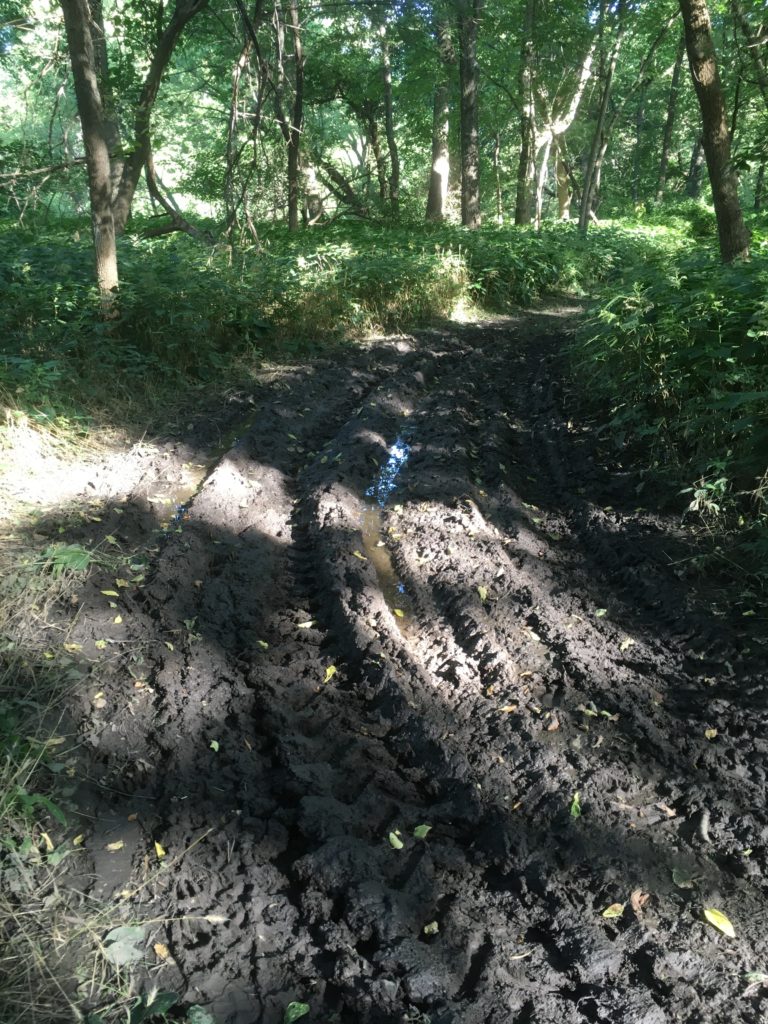
It looks like others who shouldn’t be on the trails sometimes get in there, too. “Mudding” happens on MMRs, too.
Speaking of fat bikes, they are the first bike of choice when venturing out on damp trails. The wide tires and low pressures can actually help flatten out some of the damage left by thoughtless trail users. Some foot traffic and horses can also tear up the trails. Since trails are often damp in the winter months, or covered by snow and even ice, the fat bike is often the better bet, especially in the snow, where they shine. The best option in this case is to ride when the trails are frozen.
In the latest urban trail news, the city is trying out a new kind of Pedestrian Hybrid Beacon that changes more quickly for cyclists and pedestrians, and doesn’t make motorists as annoyed, either. Hopefully it will be a Win/Win! This will be in the 48th and Huntington area. https://www.lincoln.ne.gov/City/Departments/LTU/Transportation/Traffic-Engineering/Traffic-Signals/PHB
I’m sure I’m not the only one for whom the current use of slow “beg buttons” and waiting for two light cycles to pass seems like a way to punish trail users.
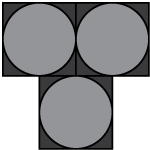 PROCEED WITH CAUTIONAll lights are dark PROCEED WITH CAUTIONAll lights are dark |  WAITPush the button and wait for the “Walk” signal WAITPush the button and wait for the “Walk” signal |
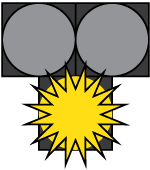 SLOW DOWNFlashing yellow light; push button has been pressed SLOW DOWNFlashing yellow light; push button has been pressed |  WAIT WAIT |
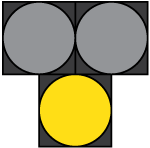 PREPARE TO STOPSolid yellow light PREPARE TO STOPSolid yellow light |  WAIT WAIT |
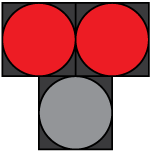 STOP!Solid red lights; crosswalk in use STOP!Solid red lights; crosswalk in use |  PROCEED WITH CAUTIONWalk signal; enter the crosswalk once vehicles have stopped PROCEED WITH CAUTIONWalk signal; enter the crosswalk once vehicles have stopped |
 STOP!Alternating flashing red lights; proceed with caution if crosswalk is clear STOP!Alternating flashing red lights; proceed with caution if crosswalk is clear | 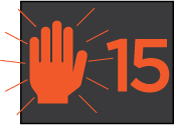 FINISH CROSSINGFlashing hand signal and countdown timer FINISH CROSSINGFlashing hand signal and countdown timer |
 PROCEED WITH CAUTIONAll lights are dark PROCEED WITH CAUTIONAll lights are dark |  WAITPush the button and wait for the “Walk” signal WAITPush the button and wait for the “Walk” signal |
